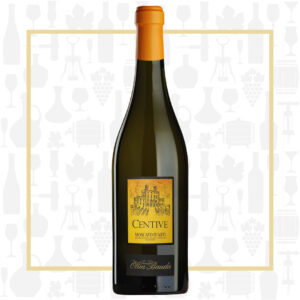Cellar Profile
The Bertolino family’s origins are in the village of Castelnuovo Calcea, in the Asti district of Piemonte. There, more than a century ago, the family began their venture in both winemaking and the wine trade. In the 1920s, the family moved to the neighbouring commune of Nizza Monferrato and the first Bertolino license to sell wine was dated there, on June 18th, 1927. In 1961, the family bought the villa Bauda at Incisa Scapaccino. They created the “Tenuta Olim Bauda” that soon became famous for Freisa, Moscato and, above all, Barbera. Following the tragic death of Bertolino Sr. in 1985, the family was forced to close the winery and sell their prized fruit to other producers in the area. In 2000, the family decided to reestablish the winery and its winemaking traditions. Today, the estate is owned and operated by the three Bertolino siblings: Dino, Diana and Gianni. Their wines are at once modern and classic, loaded with fruit, intensity and brawn and backed by elegance, structure and refinement.
Region
An outstanding high-quality wine region in northwest Italy, widely considered the country’s most stable and evolved viticultural area. Its temperature and rainfall mirror Bordeaux. The vast majority of Piedmont’s terrain is mountainous or hilly, creating optimum elevated vineyard sites for the region’s best varieties. Of those, Nebbiolo enjoys the greatest notoriety and acclaim. The grape reaches its highest potential in the sub-regions of Barolo and Barbaresco where it is made into incredibly structured, complex, and ageworthy wines. Approximately half of Piedmont’s vineyards are planted with Barbera. The past thirty years have seen significant improvement in Barbera-based wines, with some commanding price levels that approach those of Barolo and Barbaresco. Prior to 1980, white wines were, for the most part, an afterthought, but they are now gaining acclaim and popularity in Italy and abroad. Of particular interest is the resurgence of Gavi, made from the Cortese grape, and the low-alcohol, frizzante Moscato d’Asti.
Vineyard
The Centive Estate vineyard is located in the village of Fontanile. Its Moscato plantings date to the 1960s, though the Bertolino family took ownership in the early 1970s. The soil is well-drained and comprised of sand and calcareous limestone. It is now farmed organically, with certification expected in 2021.
Varieties
There are 200-some-odd strains of the Muscat grape. Of these, Moscato Bianco di Canelli—also known as Muscat Blanc å Petits Grains—is widely considered the finest and is grown sparingly throughout the wine world, most notably in Italy and France. Within those two countries, it is perhaps best known for producing lightly spritzy, semisweet Moscato d’Asti, and the sweet and delicious Muscat Beaumes-de-Venise, respectively. It is believed to be the oldest known grape variety grown in all Piedmont.
Winemaking
The classic and singular production method for Moscato d’Asti is employed here. The ripe Moscato berries are hand sorted to ensure each berry is pristine, before being gently pressed, with the must spending just a few hours on its skins before being put into stainless steel autoclaves for a cool fermentation. After brief fermentation, the wine is killed to arrest the fermentation, and the wine is micofiltered (which takes away the risk of further fermentation under cap) and bottled just weeks after harvest. The autoclave traps the carbon dioxide, forming a little mousse or spritz, leaving a lightly sparkling, fruit-forward charmer.
Tasting Notes
An explosion of aromas on the nose! Moscato always gives a little bit of grape, but in this example is joined by wildflowers, light honey, elderflower and tangerine. On the palate, you’ll find grape, elderflower, Clementine orange, peach and some wet stone minerality. The mousse is soft and the light sparkle is at times barely noticeable, but keeps the wine from coming across as sweet. This is the perfect brunch wine, but also makes a wonderful after dinner sipper, or can be enjoyed on a patio on its own.

 info@buyersandcellars.ca
www.buyersandcellars.ca
info@buyersandcellars.ca
www.buyersandcellars.ca